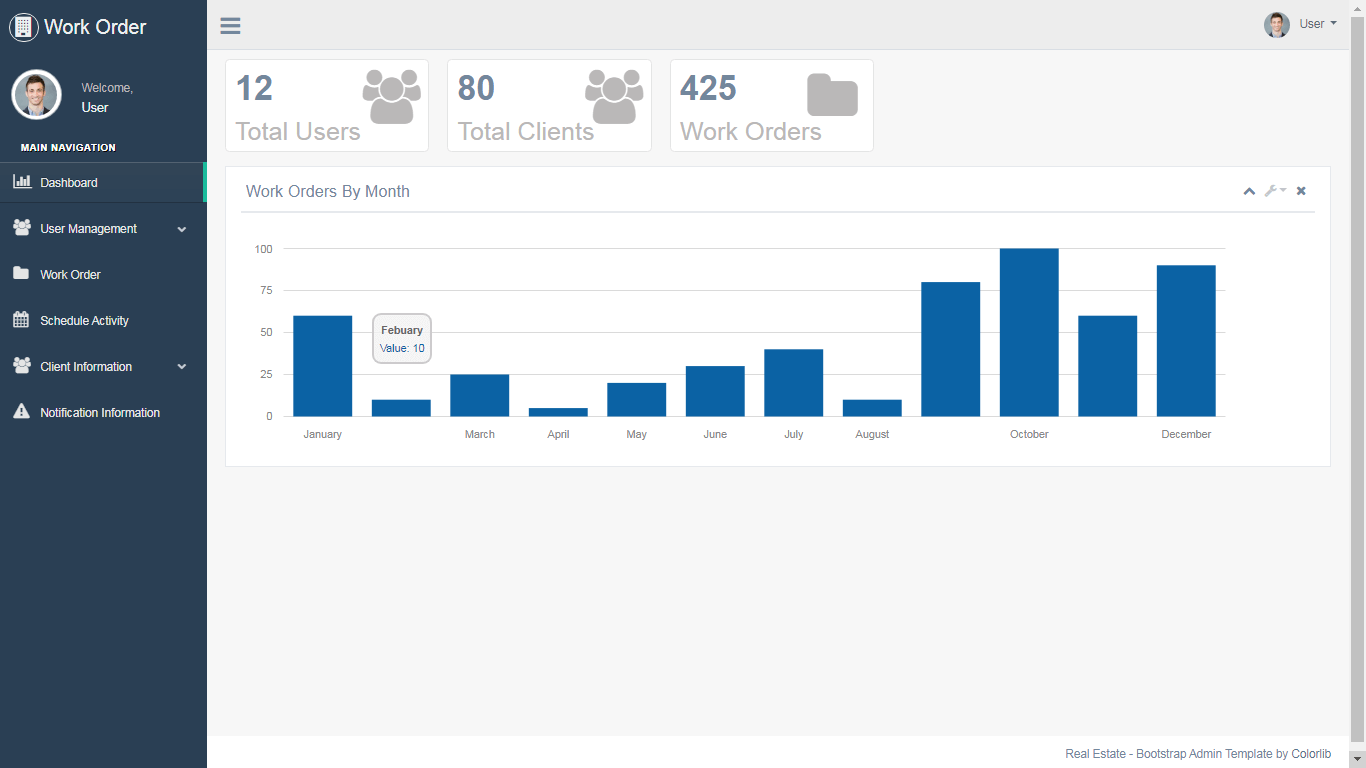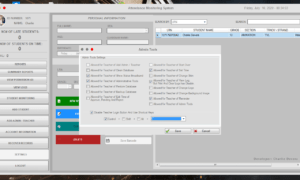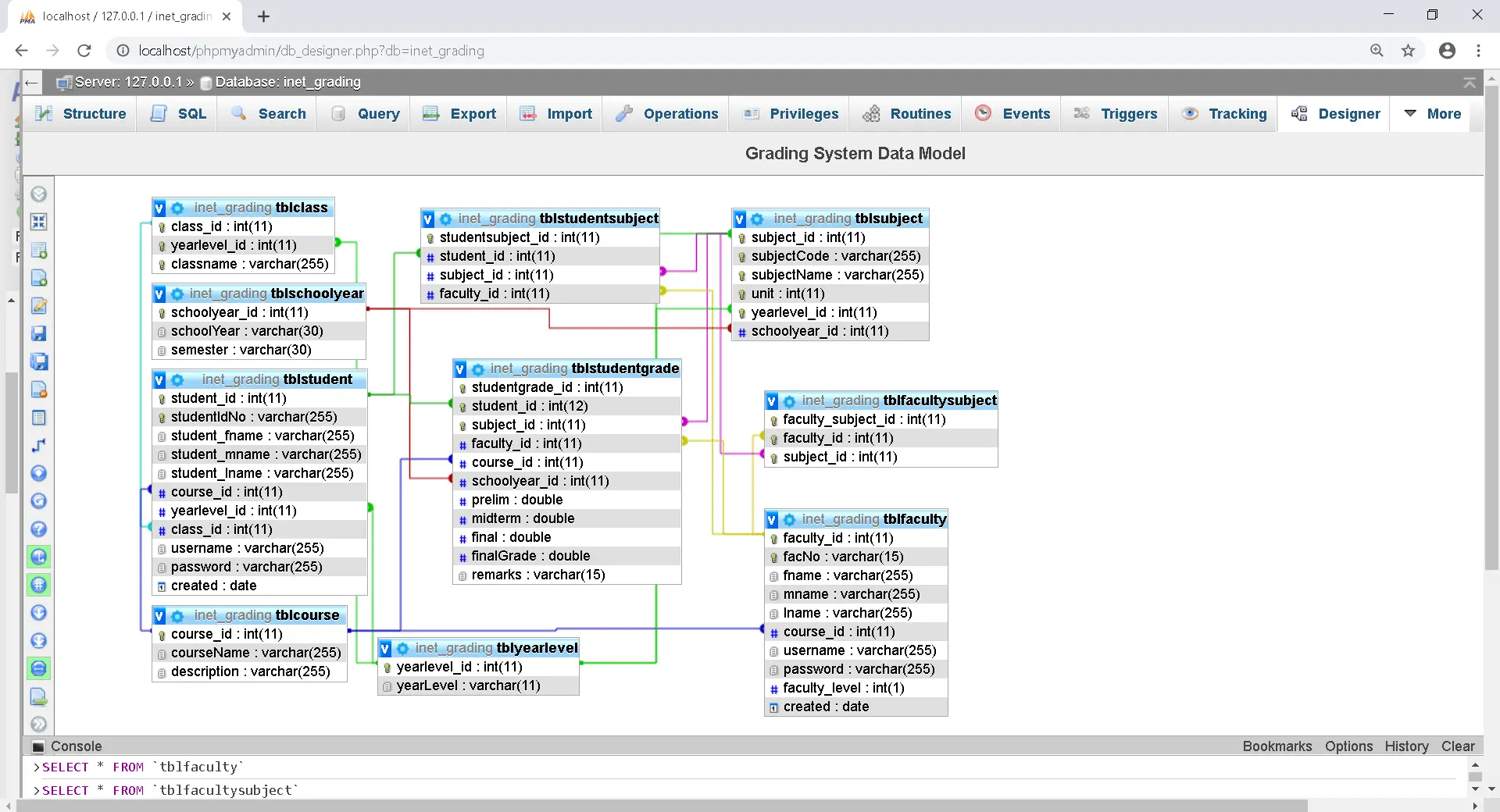Exam Paper Repository Management System
Proposed System
Table of Contents
The researcher of the study entitled Exam Paper Repository Management System is to provide a platform wherein all the information of the previous examination paper is stored. The system will enable the administrator to manage all the information about the exam paper, subject, staff, and questions. This project is built for the administrators of the exam paper repository. The admin will be the one who will have access to the system. The admin will be responsible to manage the entire information store in the system. The proposed system is built to reduce manual works in keeping all previous exam papers.
The proposed system will eliminate the manual process of keeping the exam papers. The manual system is prone on encountering errors and problems like misplacing the exam papers. The proposed system will serve as the centralized location for the exam papers.
In the academic world, the management of exam papers is a crucial aspect of educational administration. An Exam Paper Repository Management System serves as a centralized platform designed to facilitate the organization, storage, and retrieval of exam papers within educational institutions. This system enables administrators, teachers, and students to efficiently access, share, and manage exam papers in a secure and organized manner.
The importance of having a centralized system for managing exam papers cannot be overstated. With the increasing volume of exam papers generated each academic year, traditional paper-based methods of storage and retrieval become cumbersome and inefficient. An Exam Paper Repository Management System addresses these challenges by providing a digital solution that streamlines the process of storing, categorizing, and accessing exam papers. By centralizing exam paper management, educational institutions can improve efficiency, reduce administrative burden, and ensure consistency and accuracy in paper storage and retrieval.
The development of an Exam Paper Repository Management System typically involves the integration of various technologies to create a robust and user-friendly platform. In this project, we utilize PHP for server-side scripting, MySQL for database management, and Bootstrap for front-end development. PHP provides the functionality needed to implement dynamic features such as user authentication, file upload, and database interactions. MySQL serves as the database management system, facilitating efficient storage and retrieval of exam papers and related data. Bootstrap, a popular front-end framework, ensures a responsive and visually appealing user interface, enhancing the overall user experience of the system. Together, these technologies form the foundation of a powerful and efficient Exam Paper Repository Management System tailored to the needs of educational institutions.
Objectives of the Study
Improved Clarity and Measurability:
- Objective 1: Streamline exam paper management: Implement a user-friendly system for uploading, organizing, and accessing exam papers, reducing administrative burden by X% compared to traditional methods.
- Objective 2: Enable efficient search and retrieval: Develop a robust search functionality allowing administrators to locate specific exam papers based on configurable criteria (course, semester, keyword) within Y seconds.
- Objective 3: Automate exam paper archiving: Eliminate manual record-keeping by automatically archiving all uploaded exam papers in a secure and centralized digital repository.
- Objective 4: Facilitate long-term accessibility: Ensure the system reliably stores and preserves exam papers for a minimum of Z years, accessible by authorized administrators.
Focus on User Benefits:
- Objective 5: Enhance accessibility and user experience: Design a user-friendly interface with Bootstrap for efficient navigation and interaction with the exam paper repository, minimizing training requirements for administrators.
- Objective 6: Promote information security: Implement robust security measures (user authentication, access control) to safeguard the confidentiality and integrity of exam paper data.
Measurable Success:
These objectives provide a clearer picture of the system’s goals and incorporate measurable aspects (reduced workload by X%, search time within Y seconds) to gauge its success. They also emphasize user experience and security considerations.
Significance of the Study
The following groups or individuals will benefit from the study:
Administrator. This will lighten their loads of works. The success of this project will significantly benefit the admins of different educational institutions. The system will serve as their repository for different exam papers.
Proponents. If this project succeeds, the proponents will be benefited. They will know thoroughly how the system operates accurately.
Project Plan/SDLC
The researchers of this project use Software Development Life Cycle (SDLC). For this project, the researchers utilize the six steps which are determining the project requirement, gathering of data, analysing of data, system design and the coding phase.
First, the researchers determine the requirements needed for the system. The researcher will decide what hardware and software will be used in the system. After the researchers determine the project requirements, it is time for them to talk to the management office to gather information and important details needed for the system. Right after gathering information the researchers will analyze the data to determine the necessary information needed for the system. Once, the researchers have the clear and detailed product requirements, it is time to design the complete system. The system design will have the understanding and detailing the complete hardware and communication setup for the product under development. Lastly, after designing the system the coding phase will start. The coding is performed based on the coding guidelines and standards. The code goes through numerous code reviews and is optimized for best performance before the final building of the system.
Features of the System
1. Upload documents: Users can easily upload various types of documents, including exam papers, lecture notes, assignments, and study guides. This feature streamlines the process of adding new content to the repository, allowing educators to quickly share resources with students.
2. Categorization: Documents can be systematically organized within the repository through categorization based on various criteria such as type, subject, academic year, or course level. This categorization enhances accessibility and navigation, enabling users to efficiently locate specific documents amidst a vast collection of resources.
3. Versioning: The system supports version control for documents, allowing for the management of multiple iterations of the same document. Users can upload new versions of documents while retaining access to previous versions, along with the ability to add version remarks or annotations. This feature ensures transparency and accountability in document revisions and updates.
4. Add/Edit Courses: Administrators have the capability to add or edit course listings within the system, providing a comprehensive catalog of available courses and grade levels. This functionality enables educators to align documents with specific courses, ensuring relevance and accuracy in document associations.
5. Course-Grade Association: Documents can be associated with specific courses or grade levels, facilitating targeted access and distribution based on academic requirements. This association ensures that documents are appropriately tailored to the curriculum and academic levels, enhancing their utility and relevance for educators and students alike.
6. Faculty Information: The system allows for the storage and management of comprehensive information about faculty members, including contact details, academic credentials, teaching assignments, and departmental affiliations. This centralized repository of faculty information promotes efficient communication and collaboration among educators and administrators.
7. User Types: The system supports different user types with varying levels of access and privileges, including administrators, faculty members, and potentially students. Each user type is granted specific permissions and functionalities tailored to their respective roles, ensuring data security and administrative control.
8. Various Reports: The system provides the capability to generate a variety of reports to track document submissions, faculty activity, and other key metrics. These reports include document submission summaries to monitor content contributions, faculty activity logs to track user engagement, and faculty with no submissions to identify areas for improvement or support. By leveraging these reports, administrators gain valuable insights into system usage and performance, facilitating informed decision-making and optimization of system functionalities.
Screenshots
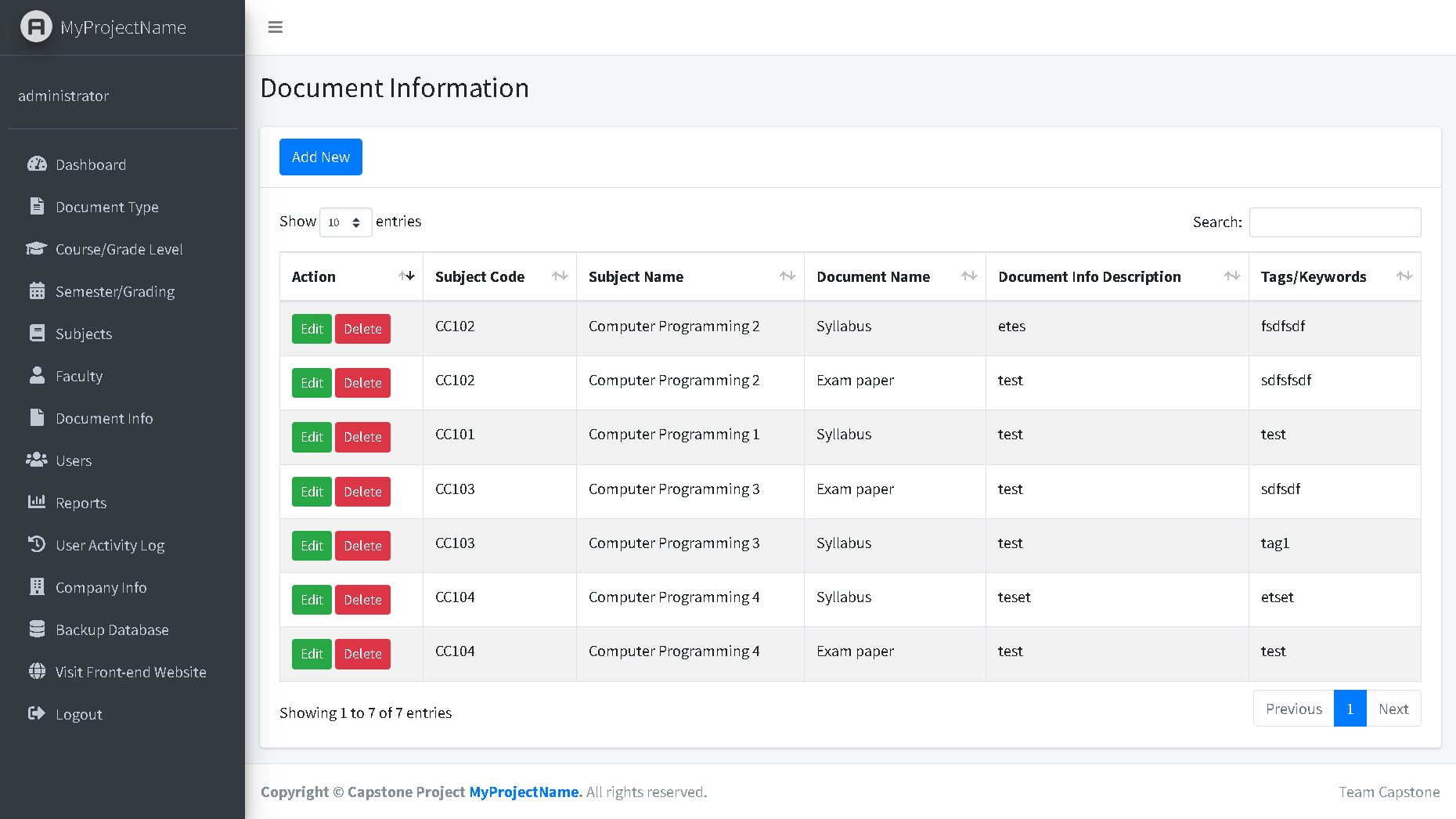
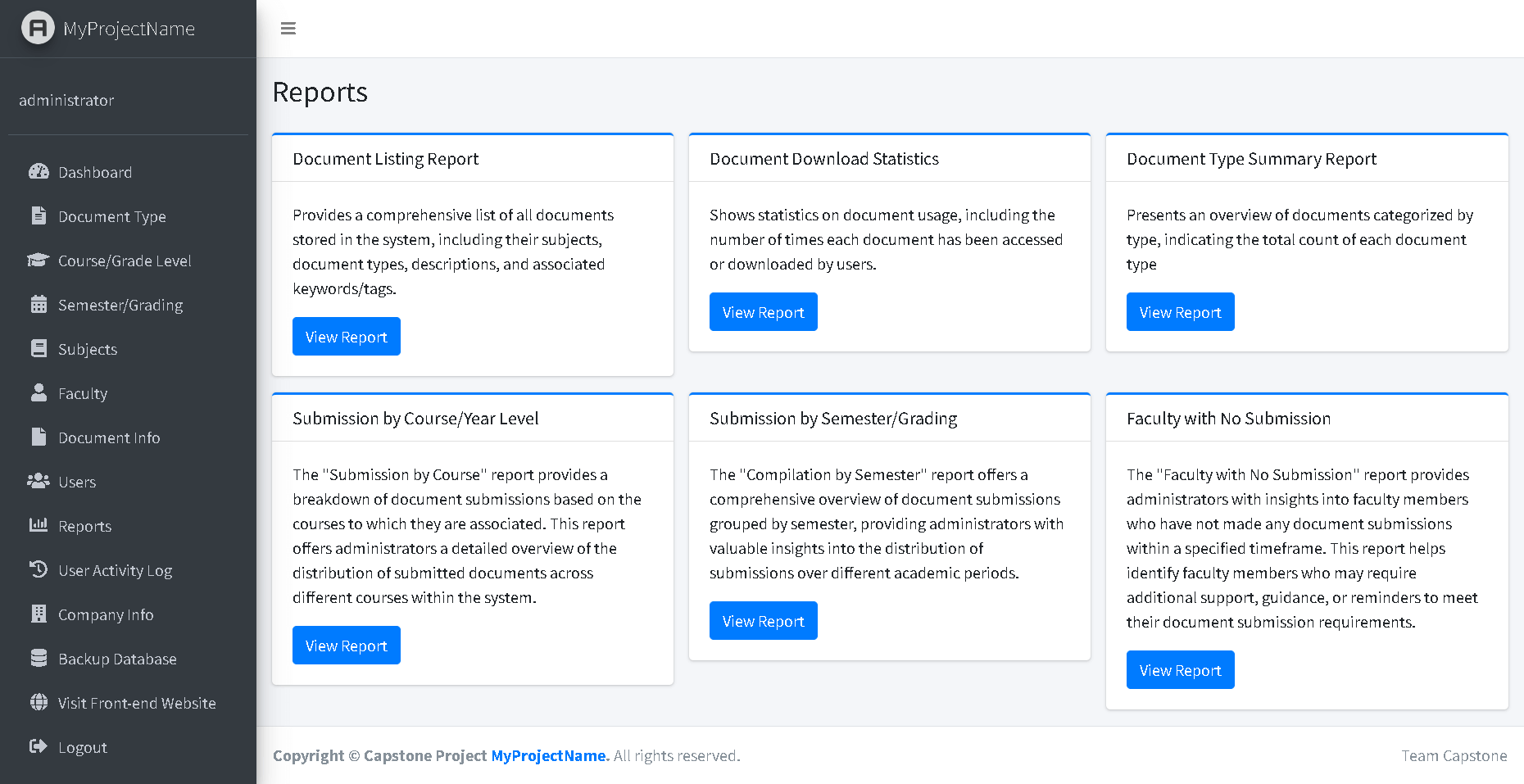
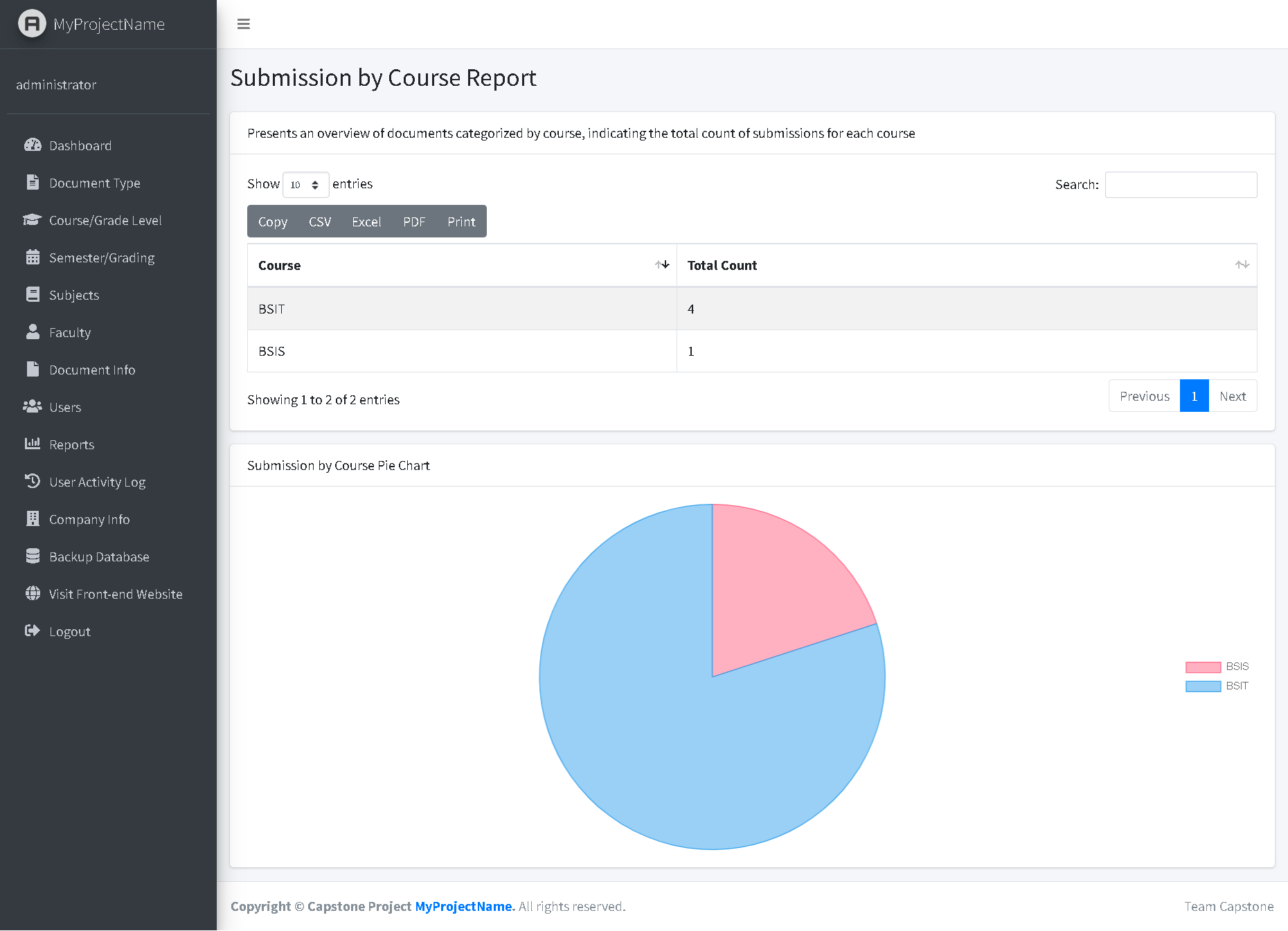
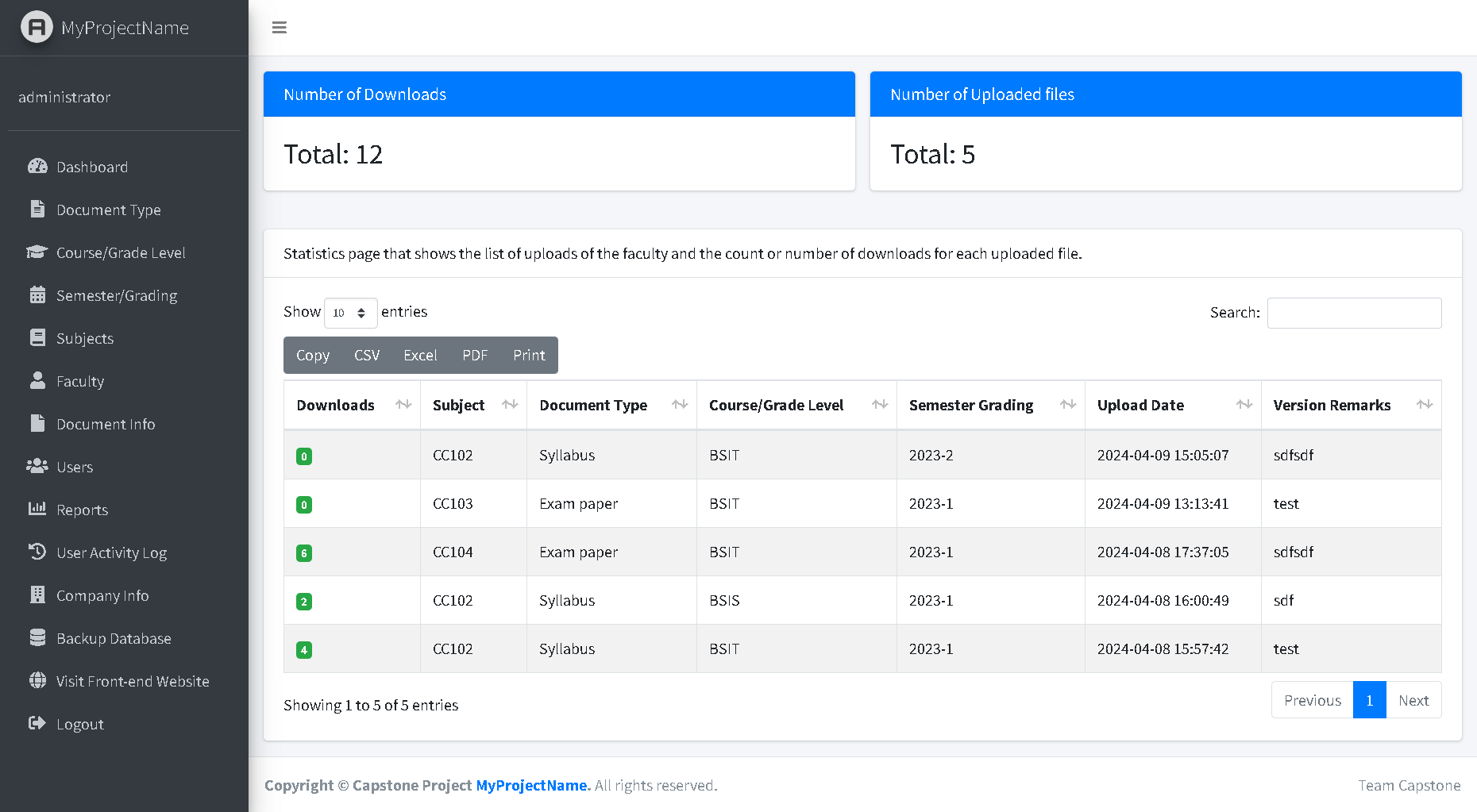
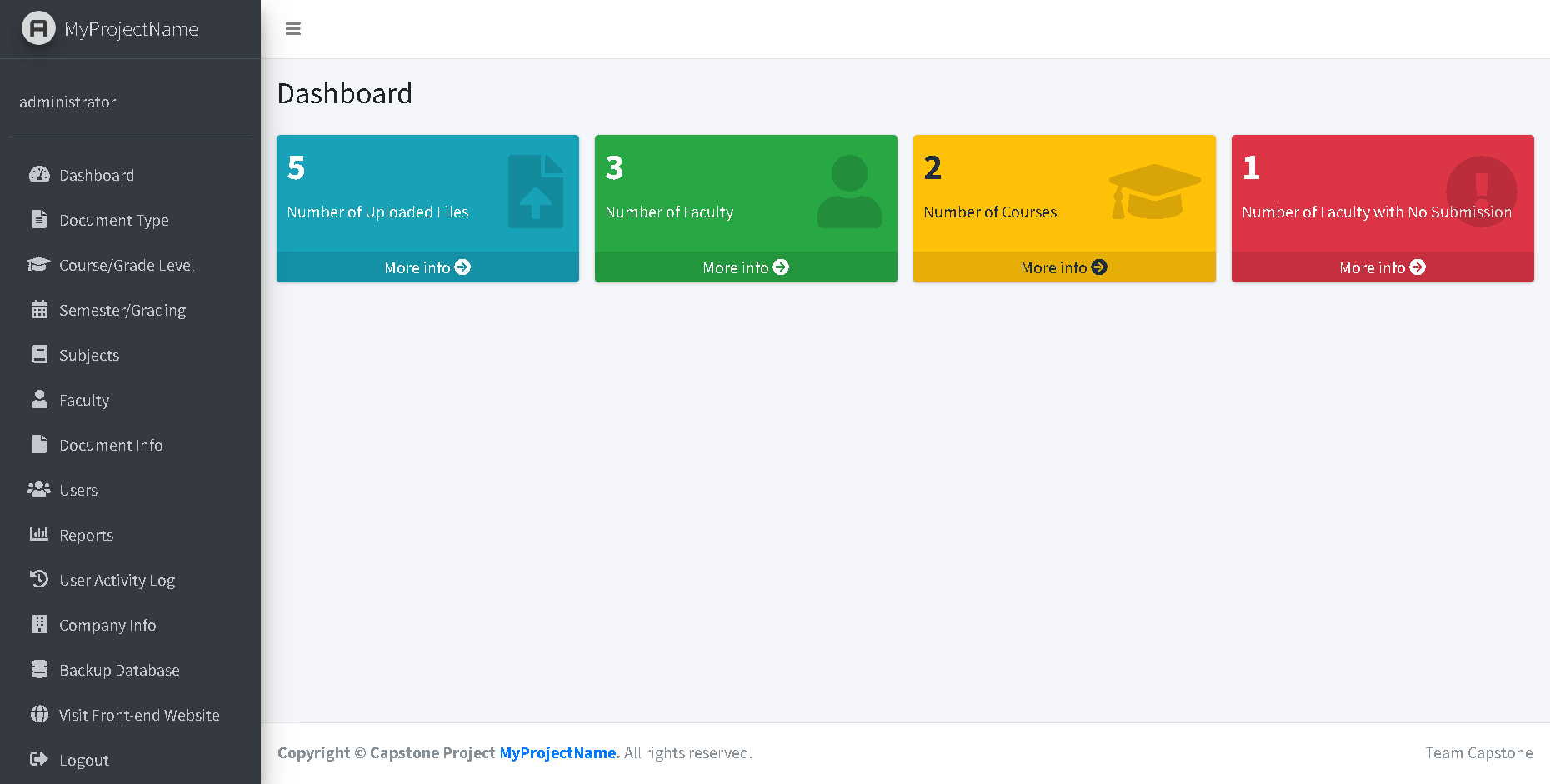
YouTube Video Demonstration
Conclusion:
This project has explored the design of an exam paper repository management system built with PHP, MySQL, and Bootstrap. This digital solution offers a powerful alternative to traditional paper-based storage methods, transforming how educational institutions manage exam papers.
Key Takeaways:
- The system streamlines exam paper management through user-friendly functionalities like document upload, categorization, search, and version control. Administrators can efficiently organize and retrieve exam papers based on specific criteria, significantly reducing time spent searching for physical documents.
- Secure digital archiving ensures long-term accessibility and information security of exam papers. Authorized administrators can access these papers from any location with an internet connection, eliminating the risk of loss or damage associated with physical storage.
- The system promotes transparency and accessibility. Faculty members can easily upload exam papers, and administrators can generate various reports to monitor submission trends, identify areas for improvement, and analyze faculty contributions.
Traditional vs. Digital Exam Paper Management:
This system offers numerous advantages over traditional paper-based methods. Paper-based storage often leads to cluttered filing cabinets, difficulty in locating specific exams, and the risk of document degradation or loss. The digital repository eliminates these challenges, providing a centralized, secure, and readily accessible platform for managing exam papers.
Future Advancements:
The potential for further development is vast. Here are some exciting possibilities to consider:
- Integration with Learning Management Systems (LMS): Seamless integration with existing LMS platforms could streamline exam paper distribution to students and automate course information synchronization.
- Optical Character Recognition (OCR) Integration (Optional): Incorporating OCR technology would enable text-based search functionalities within uploaded exam papers, further enhancing searchability and information retrieval capabilities.
- Advanced Analytics: Expanding reporting functionalities to provide more sophisticated data analysis could identify trends in exam paper submissions over time, analyze faculty contributions, and generate insights for informed decision-making.
By implementing this exam paper repository management system and exploring these potential future improvements, educational institutions can revolutionize how they manage exam papers. This digital solution fosters efficiency, accessibility, and data-driven decision-making within the academic environment, ultimately benefiting faculty, administrators, and students alike.
You may visit our Facebook page for more information, inquiries, and comments. Please subscribe also to our YouTube Channel to receive free capstone projects resources and computer programming tutorials.
Hire our team to do the project.
